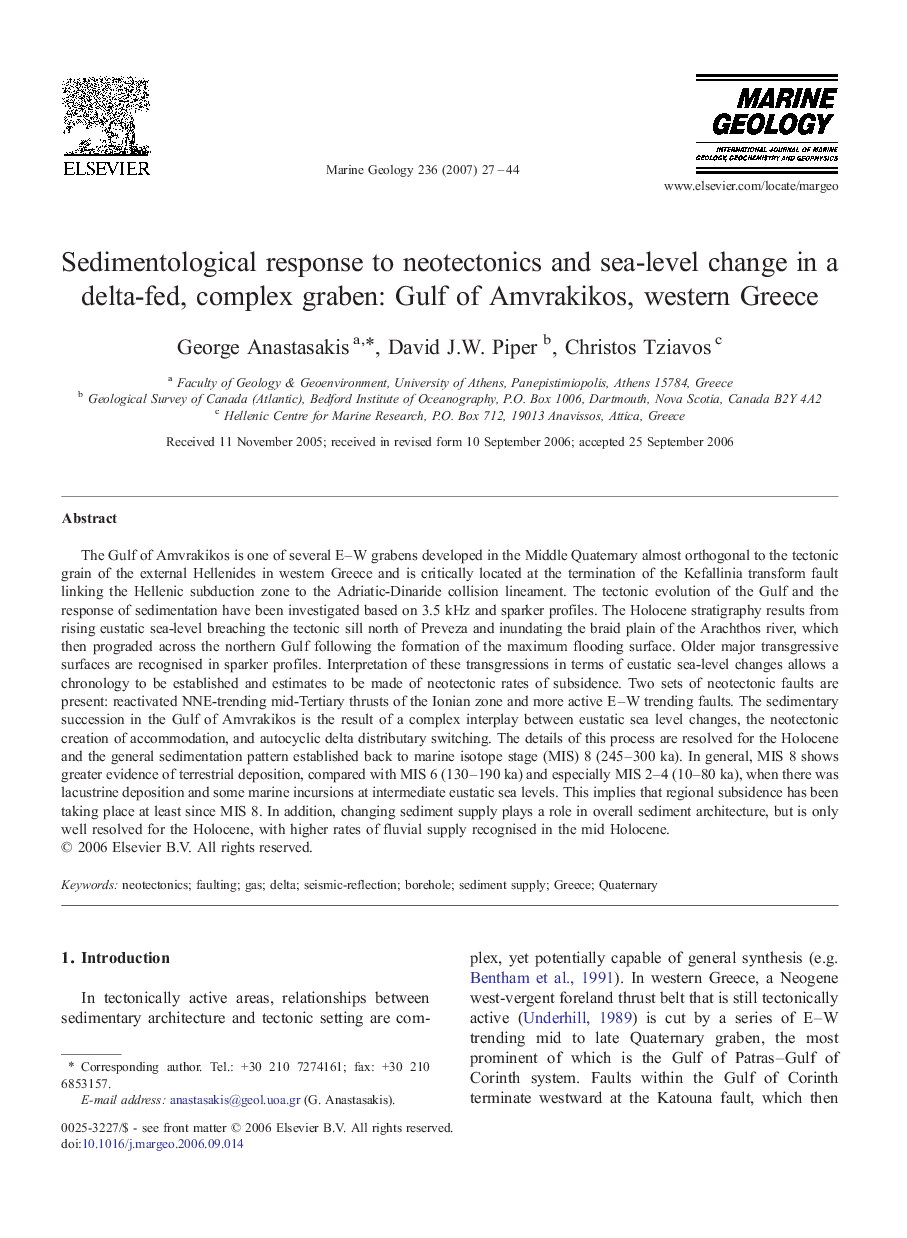| کد مقاله | کد نشریه | سال انتشار | مقاله انگلیسی | نسخه تمام متن |
|---|---|---|---|---|
| 4719620 | 1639202 | 2007 | 18 صفحه PDF | دانلود رایگان |

The Gulf of Amvrakikos is one of several E–W grabens developed in the Middle Quaternary almost orthogonal to the tectonic grain of the external Hellenides in western Greece and is critically located at the termination of the Kefallinia transform fault linking the Hellenic subduction zone to the Adriatic-Dinaride collision lineament. The tectonic evolution of the Gulf and the response of sedimentation have been investigated based on 3.5 kHz and sparker profiles. The Holocene stratigraphy results from rising eustatic sea-level breaching the tectonic sill north of Preveza and inundating the braid plain of the Arachthos river, which then prograded across the northern Gulf following the formation of the maximum flooding surface. Older major transgressive surfaces are recognised in sparker profiles. Interpretation of these transgressions in terms of eustatic sea-level changes allows a chronology to be established and estimates to be made of neotectonic rates of subsidence. Two sets of neotectonic faults are present: reactivated NNE-trending mid-Tertiary thrusts of the Ionian zone and more active E–W trending faults. The sedimentary succession in the Gulf of Amvrakikos is the result of a complex interplay between eustatic sea level changes, the neotectonic creation of accommodation, and autocyclic delta distributary switching. The details of this process are resolved for the Holocene and the general sedimentation pattern established back to marine isotope stage (MIS) 8 (245–300 ka). In general, MIS 8 shows greater evidence of terrestrial deposition, compared with MIS 6 (130–190 ka) and especially MIS 2–4 (10–80 ka), when there was lacustrine deposition and some marine incursions at intermediate eustatic sea levels. This implies that regional subsidence has been taking place at least since MIS 8. In addition, changing sediment supply plays a role in overall sediment architecture, but is only well resolved for the Holocene, with higher rates of fluvial supply recognised in the mid Holocene.
Journal: Marine Geology - Volume 236, Issues 1–2, 15 January 2007, Pages 27–44